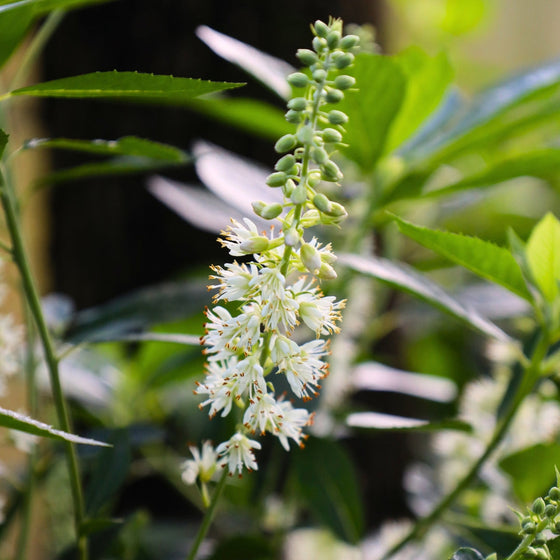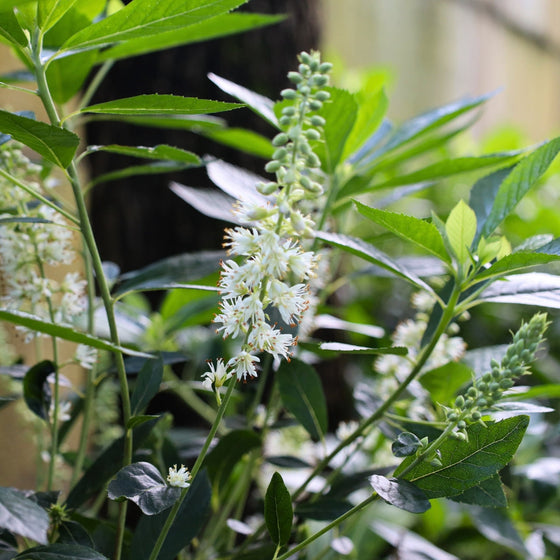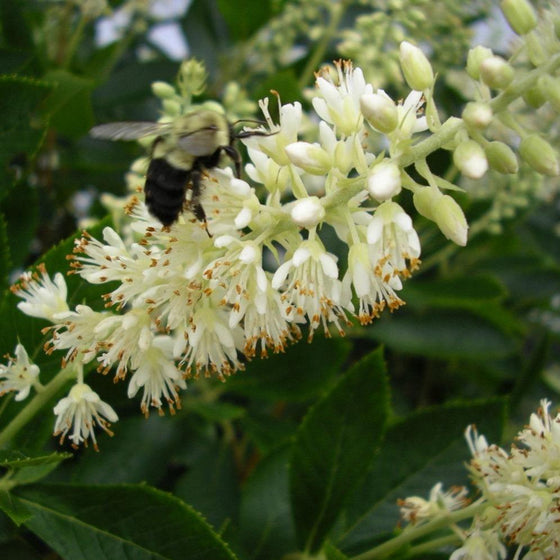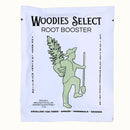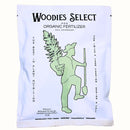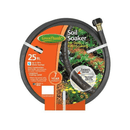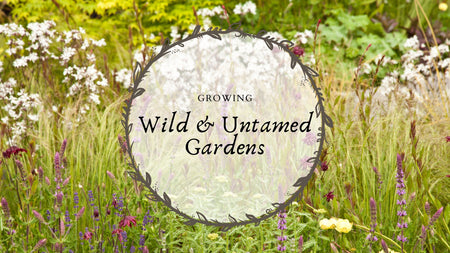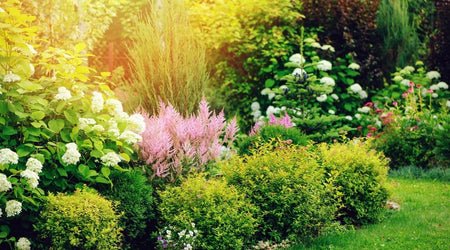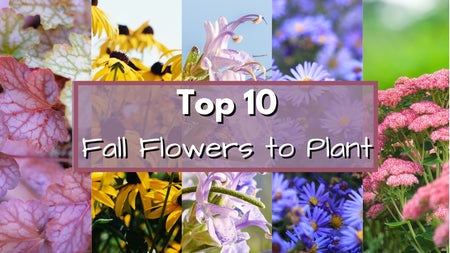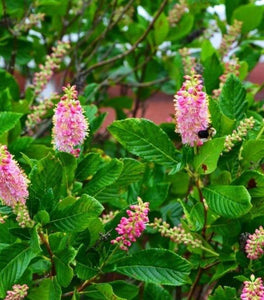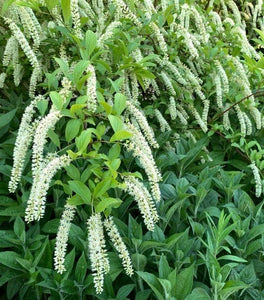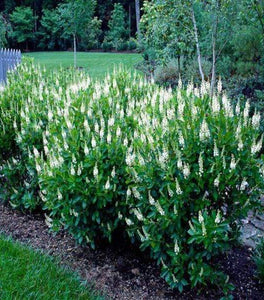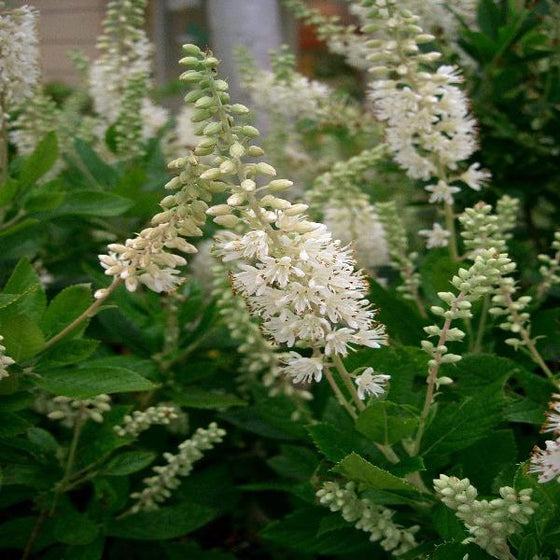
Images Depict Mature Plants
Clethra Hummingbird Summersweet for Sale Online
Clethra Hummingbird, also known as Hummingbird Summersweet, is a compact, deciduous shrub prized for its fragrant, bottlebrush-like white flower spikes that bloom in mid to late summer. This dwarf cultivar of the native Clethra alnifolia grows just 3 to 4 feet tall and wide, making it an ideal choice for small gardens, foundation plantings, and mixed borders. The sweetly scented blooms are highly attractive to pollinators, especially bees, butterflies, and, true to its name, hummingbirds—bringing lively motion and ecological value to your landscape.
Perfect for moist, shady areas, Clethra Hummingbird thrives in part shade but also tolerates full sun when given adequate moisture. It is particularly well suited for rain gardens, woodland edges, and waterside plantings, where its love for consistently damp soil is an asset. This hardy native shrub is deer resistant and tolerant of clay soil, making it a reliable performer in a variety of challenging garden conditions. In fall, its dark green foliage turns a warm golden yellow, adding a splash of seasonal color to your planting beds.
Hardy in USDA Zones 4–9, Hummingbird Summersweet is easy to grow and requires minimal maintenance once established. It naturally forms a dense, rounded shape, making it ideal for low hedges, shrub borders, and pollinator-friendly garden designs. With its compact habit, intoxicating fragrance, and ability to attract beneficial wildlife, Clethra Hummingbird is a must-have shrub for gardeners seeking multi-season interest and native beauty in smaller spaces.
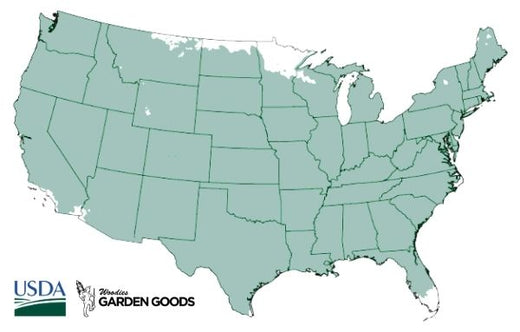
| Hardiness Zone: | 4-9 |
|---|---|
| Mature Height: | 2.5 to 3 Feet |
| Mature Width: | 3 to 4 Feet |
| Classification: | Deciduous shrub |
| Sunlight: | Full sun to part shade |
| Habit: | Dwarf, deciduous, densely branched, multi-stemmed clump forming |
| Flower Color: | Fragrant, white flowers in mid to late summer. |
| Foliage: | New growth emerges a dark green, changing to an golden yellow in the fall |
| Soil Condition: | Any well drained soil but will tolerate "wet feet" |
| Water Requirements: | Water well until established |
| Uses: | Extremely attractive when used as a focal point in the mixed border, mass planting, or a specimen planting. Provides unmatched winter interest especially when planted in front of a contrasting backdrop |
How to Care for Clethra Hummingbird
Before you buy a Clethra Hummingbird Shrub, make sure to read about the recommended care instructions to keep this plant healthy and thriving.
How do I plant Clethra Hummingbird Shrubs?
Planting Clethra Hummingbird shrubs begins with selecting the right location—this native plant thrives in full sun to partial shade and prefers consistently moist, acidic soil. Ideal for rain gardens, woodland edges, and low spots in the landscape, Hummingbird Summersweet is particularly well-suited for areas where drainage may be slower. Start by digging a hole twice as wide and just as deep as the root ball. Gently remove the shrub from its container, loosen the roots, and place it in the hole so that the crown is level with the soil surface. Backfill with a mix of native soil and organic compost, then water deeply to help settle the soil and establish strong root contact. Space multiple Clethra Hummingbird shrubs 3 to 5 feet apart to allow for mature growth and air circulation. Apply a 2- to 3-inch layer of mulch around the base of the plant to retain soil moisture and suppress weeds, keeping mulch a few inches away from the main stem to avoid rot. Regular watering during the first growing season is essential, especially during dry spells, to help the roots establish in their new location. Once established, this low-maintenance shrub rewards gardeners with sweetly fragrant blooms, attractive foliage, and strong wildlife value—making it a standout choice for pollinator-friendly and native plant landscapes.
How do I water Clethra Hummingbird Shrubs?
Watering Clethra Hummingbird shrubs properly is essential for promoting healthy growth, vibrant foliage, and abundant summer blooms. As a moisture-loving native shrub, Hummingbird thrives in consistently damp soil, especially during its first growing season. Water deeply once or twice a week, allowing the soil to remain evenly moist but not soggy. These shrubs are ideal for rain gardens and low-lying areas where water tends to collect, making them excellent choices for landscapes with poor drainage or periodic flooding. Once established, Clethra Hummingbird is more tolerant of dry periods but will still perform best with regular watering, particularly during hot, dry weather. In sandy or fast-draining soils, mulching around the root zone can help retain moisture and reduce watering frequency. Always water at the base of the shrub to prevent wetting the foliage, which can reduce the risk of disease. With a consistent watering schedule, this fragrant, pollinator-attracting shrub will reward you with lush green growth and long-lasting summer blooms that light up the garden and support local wildlife.
How do I fertilize Clethra Hummingbird Shrubs?
Fertilizing Clethra Hummingbird shrubs is a simple process that encourages healthy growth, lush foliage, and abundant flower production. In early spring, apply a slow-release, balanced fertilizer—such as a 10-10-10 or 12-6-6 formulation—around the base of the plant before new growth emerges. Be sure to keep the fertilizer a few inches away from the stem to prevent root burn, and water thoroughly after application to help nutrients absorb into the soil. Clethra Hummingbird prefers slightly acidic soil, so adding composted pine bark or a soil acidifier annually can also help maintain optimal conditions. Avoid over-fertilizing, as excessive nutrients may encourage foliage growth at the expense of blooms. If your soil is rich in organic matter, one spring application is typically sufficient for the season. For a more natural approach, incorporate compost or well-aged leaf mold around the shrub each year to slowly enrich the soil and improve moisture retention. With minimal feeding and consistent soil health, Clethra Hummingbird will thrive, producing fragrant white flower spikes that attract pollinators while enhancing rain gardens, woodland edges, and other moist landscape settings.

How and when do I prune Clethra Hummingbird Plants?
Pruning Clethra Hummingbird plants is best done in late winter or early spring, just before new growth begins. Because this compact, deciduous shrub blooms on new wood, pruning at the right time won’t interfere with its showy summer flowers. Start by removing any dead, damaged, or crossing branches to improve air circulation and shape the plant. You can also cut back up to one-third of the plant’s overall height to encourage fuller, denser growth and more vigorous flowering later in the season. Avoid pruning in late spring or summer, as this can remove developing flower buds and reduce blooming. Clethra Hummingbird naturally maintains a tidy, rounded shape, so heavy pruning is rarely needed—making it a great low-maintenance choice for rain gardens, woodland borders, and pollinator-friendly landscapes. If desired, light pruning after flowering can help refine the plant’s shape or remove spent blooms. With regular, well-timed pruning, this fragrant, deer-resistant native shrub will continue to deliver lush foliage and masses of white, butterfly-attracting blooms year after year.

